|
Appendix
Summary of
Anomalous Evidence Related to Human Antiquity
In Table A3.1, sites mentioned in this book are listed in order of
the published minimum ages we find most likely or otherwise worthy
of consideration. The following is a glossary of terms used in the
table.
-
eoliths = naturally broken stone
with one or more edges intentionally modified or worn by
use.
-
paleoliths = stones purposely
fashioned by chipping into a recognizable tool type.
-
neoliths = the most advanced
stone tools and utensils.
-
human = identified by at least
some workers as anatomically modem human.
-
incised, broken, carved, or
scraped bones = purposely modified animal bones.

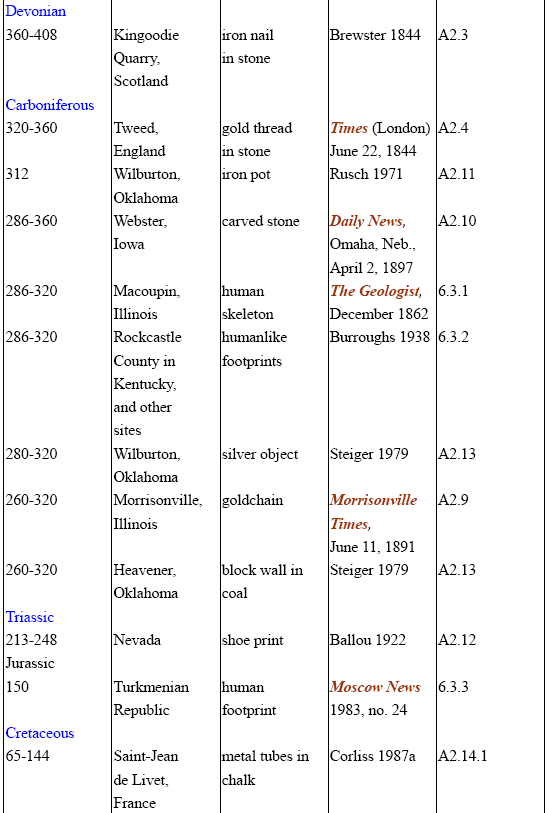
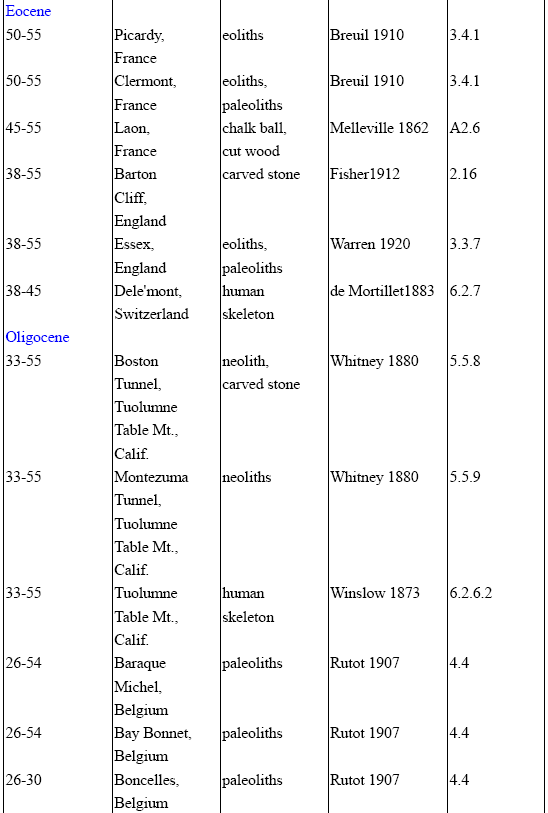
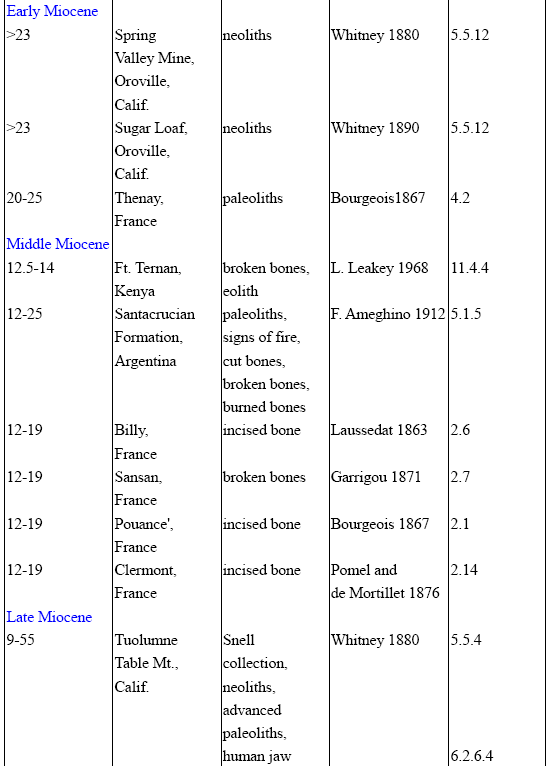

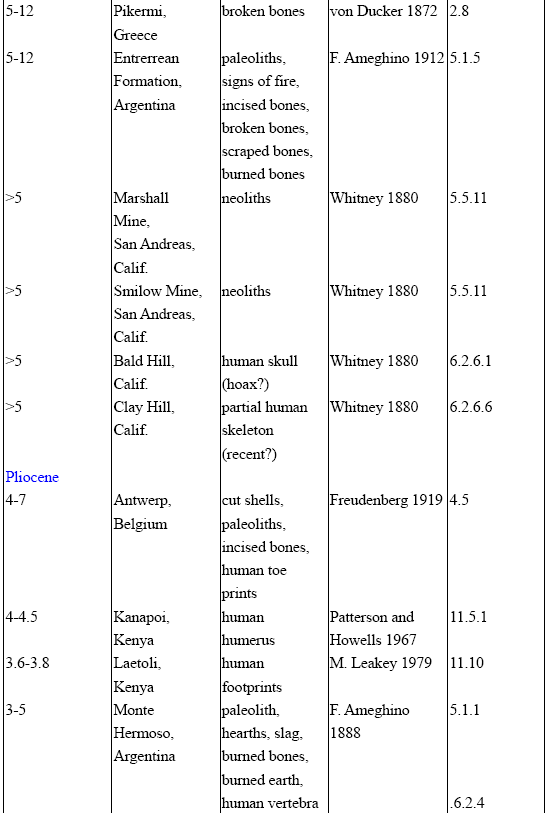

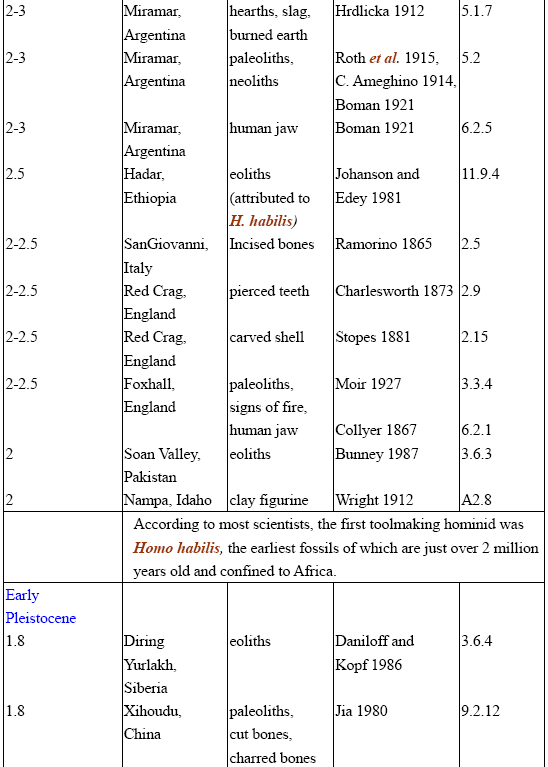
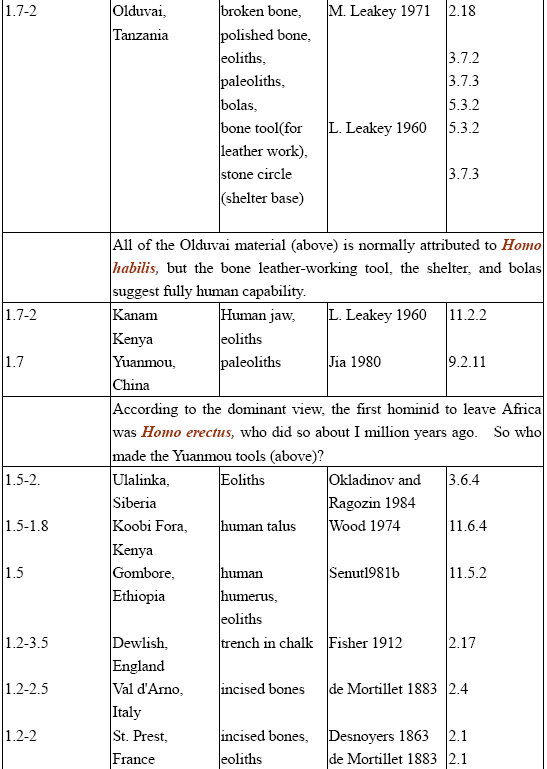
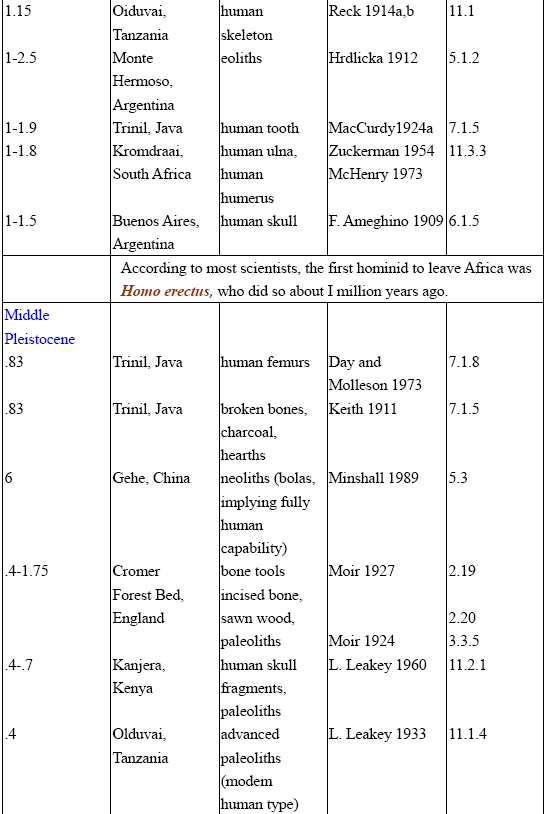


The following Pleistocene discoveries
are anomalous only for North and South America (Table A3.2).
According to most scientists, humans first entered North America not
more than 12,000 (.012 million) years ago.
Question marks after the dates of some
of the following discoveries indicate they- were later assigned AMS
radiocarbon dates of less than 10,000 years.


Back
to Contents
|













